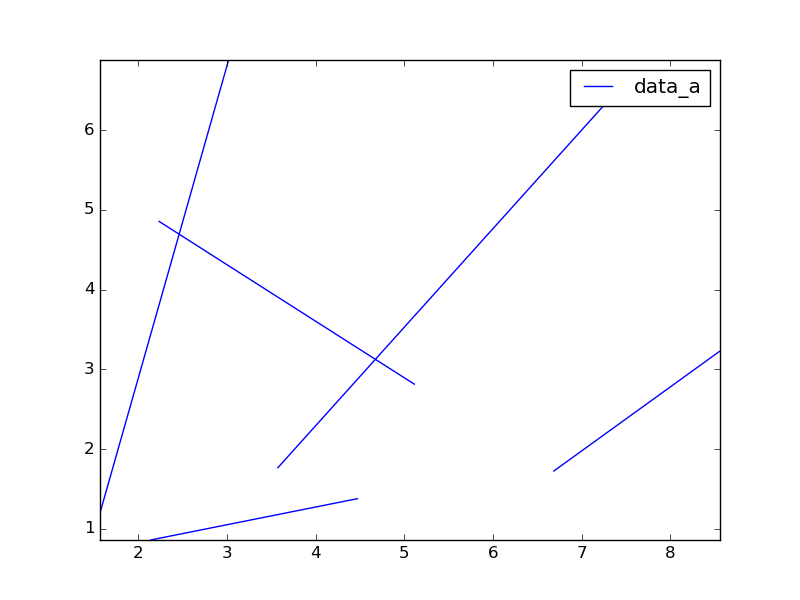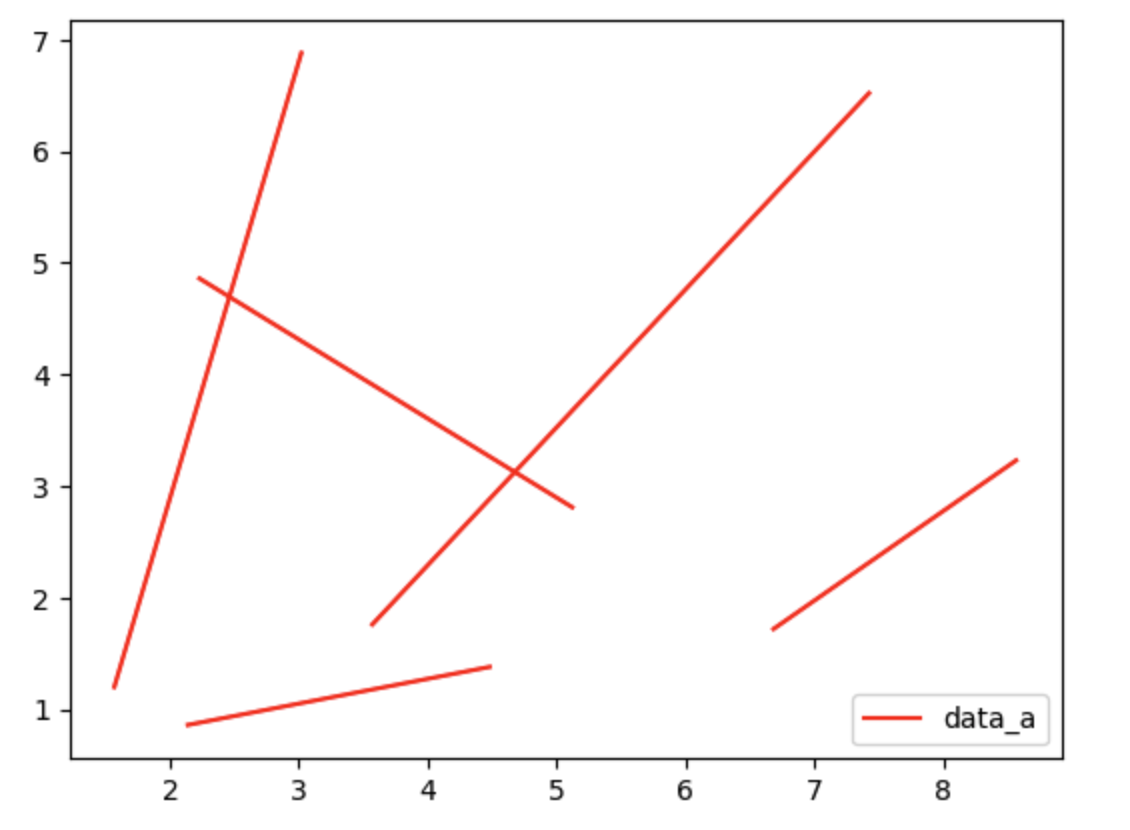I have data that results in multiple lines being plotted, I want to give these lines a single label in my legend. I think this can be better demonstrated using the example below,
a = np.array([[ 3.57, 1.76, 7.42, 6.52],
[ 1.57, 1.2 , 3.02, 6.88],
[ 2.23, 4.86, 5.12, 2.81],
[ 4.48, 1.38, 2.14, 0.86],
[ 6.68, 1.72, 8.56, 3.23]])
plt.plot(a[:,::2].T, a[:, 1::2].T, 'r', label='data_a')
plt.legend(loc='best')
As you can see at Out[23] the plot resulted in 5 distinct lines. The resulting plot looks like this

Is there any way that I can tell the plot method to avoid multiple labels? I don't want to use custom legend (where you specify the label and the line shape all at once) as much as I can.




